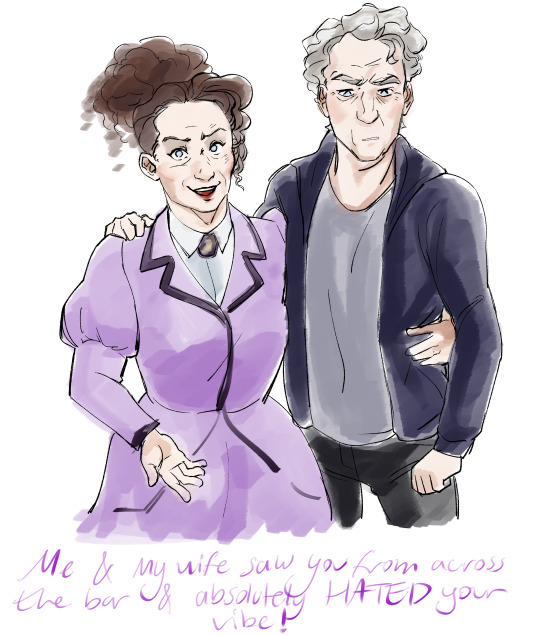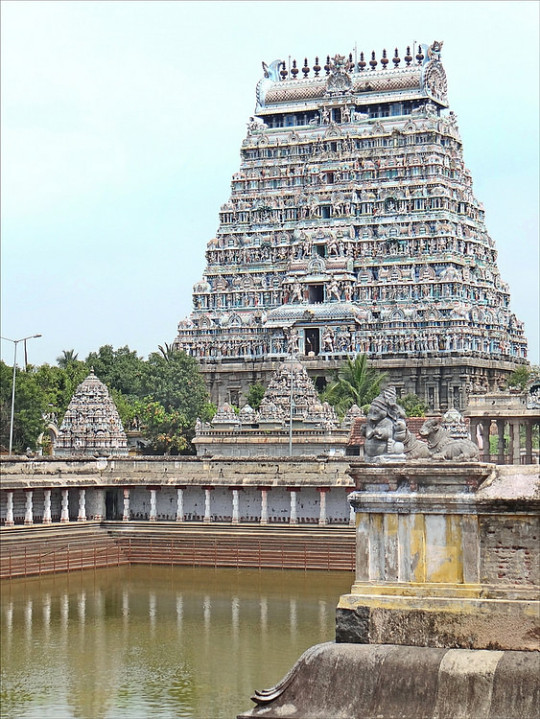#12th
Explore tagged Tumblr posts
Text



I hoped there'd be stars.
#dwedit#timelordgifs#dwgif#doctor who#peter capaldi#12th doctor#twelfth doctor#12th#original#*gifs#out of the drafts
2K notes
·
View notes
Text
Astro Notes [4]
Planets in the 12th house point to hidden strengths or challenges. These people have an unconscious or spiritual drive but face struggles with self-undoing or secrets. For example, Venus in the 12th house would indicate hidden romantic desires or private relationships.
A stellium in the 8th house causes deep transformation and intense emotional experiences. These people experience major life changes, powerful relationships & a strong interest in the mysteries of life, like death, intimacy & shared resources.
When a planet is retrograde at birth, its energy is turned inward, causing people to experience its traits more introspectively or with delay. For example, Mercury retrograde in a birth chart leads to deep reflection and reconsideration of communication & thought patterns.
Chiron’s return occurs around age 50, marking a time when people confront deep healing around their core wounds. This transit brings unresolved pain or vulnerability to the surface, pushing people to heal, teach, or offer wisdom about their life’s challenges.
The South Node represents past life experiences or tendencies. Having it in the 10th house shows a past focus on career or public life. In this life, there’s a pull to move away from over-identifying with your career & seek more personal, emotional fulfillment.
Pluto in the 1st house gives an intense, powerful presence. These people undergo extreme personal transformations & are perceived as intense or sometimes magnetic. They often subconsciously help others transform, though they can face challenges with control or feeling misunderstood.
Uranus square Sun creates a life of unpredictability & sudden changes. People with this aspect experience moments of rebellion, breakthroughs & a need to break free from old patterns. There’s a constant tension between personal freedom and the need for stability.
Ascendant conjunct Neptune gives a dreamy, idealistic appearance. These people present themselves in an ethereal, mysterious way, with strong intuition. They struggle with confusion, deception, or seeing themselves clearly.
Jupiter in the 6th house expands daily routines, work life & health. These people experience growth through their job, daily habits, or service to others. They receive opportunities through helping or teaching others, though they may indulge in excess, especially with food or work.
Saturn in the 5th house brings a disciplined approach to creativity, love, and children. They'll face delays or challenges in romance & self-expression. But with commitment, they'll achieve success & stability in these areas over time.
#planets in the 12th house#planets#in#the#12th#twelfth#house#stellium in the 8th house#stellium#eight#8th#retrograde in natal#retrograde#chiron return#chiron#return#south node#pluto in the first house#pluto#first#1st#uranus square sun#uranus#square#sun#ascendant#rising#ascendant conjunct neptune#neptune#conjunct
142 notes
·
View notes
Text

permission to kill you?
#my art#fanart#twissy#doctor who#dw#twelfth doctor#12th#missy#the master#thoschei#will this flop because i didnt bother with nice colours? we'll see
508 notes
·
View notes
Text

#sorry guys ive had alcohol#doctor who#dw#dr who#new who#theta sigma#twelfth doctor#clara oswald#listen#12th doctor#12th#12#au where listen goes like this#memes#dw memes#doctor who memes
151 notes
·
View notes
Photo

Krak Des Chevaliers
Krak des Chevaliers (also spelt Cracs des Chevaliers, and known in Arabic as Hisn al-Akrad) is a castle in Syria originally built for the Emir of Aleppo in 1031 CE but acquired and extensively rebuilt by the Knights Hospitaller in 1144 CE. Considered virtually impregnable, it was the largest Crusader castle in the Middle East and a bulwark against the expansion of the Muslim states during the 12th and 13th centuries CE. The castle is today listed as a UNESCO World Heritage site.
Location & Function
The castle, located on a natural citadel near the coast of southern Syria between Tartus and Tripoli, was originally built by the Emir of Aleppo in 1031 CE on the site of a much earlier fortification. After the defeat of the Emir, the stronghold was given to the medieval military order the Knights Hospitaller in 1144 CE by Raymond II of Tripoli (r. 1137-1152 CE), probably so that it could be sufficiently manned and thus provide a useful cover to the eastern frontier of the County of Tripoli, one of the Crusader-created states which comprised the Latin East in the Levant. The castle, one of around 25, was one of the most important held by the Hospitallers, whose headquarters was at Jerusalem and then from 1191 CE at Acre.
Extended and with a new outer defensive wall, Krak des Chevaliers became one of the region's major strongholds. Perched on a steep-sided ravine above a vital pass giving access from the coast to the inland plains of Syria, the castle helped control the surrounding region. As the castle provided a permanent home to a garrison of Hospitaller knights, it posed a military threat to any army passing through the area. In addition, the territory under the protection of Krak des Chevaliers included that of the Muslim sect the Assassins, who, accordingly, paid an annual tribute to the Hospitallers.
At its peak, the castle housed some 2,000 people including infantry, crossbow specialists, and mercenaries, although the actual number of brother knights was as few as 60 according to records dating to 1255 CE. The imposing castle was crucial to the general defence of the Latin East in the 12th and 13th century CE. Krak des Chevaliers was not far from the Muslim-held cities of Hims and Hama, against which cities several raids were launched during the first half of the 13th century CE. The power of the Hospitallers to disrupt Muslim expansionist plans is exhibited in a description by the Muslim historian Ibn al-Athir of the castle's commander or castellan in 1170 CE as:
A man who, through his bravery, occupied an eminent position and who was like a bone stuck in the throat of the Muslims.
(quoted in Nicolle, 21)
Continue reading...
91 notes
·
View notes
Text


HAPPY 12/12!






get emilyd bozos I did try to add those seals if you're wondering what those blobs are!
#pixel art#thomas and friends#thomas the tank engine#ttte#12/12#12th#12#december#Emily ttte#ttte emily#ttte pixel art#seal
21 notes
·
View notes
Text

Street scene in the 12th district of Paris during the 1910 Great Flood
French vintage postcard
#postal#street#scene#historic#french#ansichtskarte#great#paris#sepia#vintage#tarjeta#1910#briefkaart#photo#district#12th#postkaart#ephemera#postcard#great flood french#postkarte#photography#flood#carte postale
27 notes
·
View notes
Text
For any of you who were confused, in Hellenistic astrology, the 12h rules malicious gay faggottry.
#astrology#astro#12h#natal chart#birth chart#drag race#rupaul's drag race#Nicole Paige brooks#drag#traditional astrology#12th#12th house#houses#house synastry#synastry#astrology observations
14 notes
·
View notes
Text


Som old attempt at Astarion fan art I did that ended up looking like he is cosplaying 12
#astarion#bg3#bg3 astarion#bg3 fanart#baldur's gate 3#12th doctor#doctor who#twelfth doctor#12th#12#vampire#mistiedoesart
32 notes
·
View notes
Text

12th anniversary❤️ happy to you happy to be your fan❤️
21 notes
·
View notes
Text


2K notes
·
View notes
Text
Sudden Introversion
Transits or progressions in your chart causing sudden, temporary introversion.
Mercury Retrograde slows down communication & thinking, leading to introspection & more time alone. People with Mercury retrograde in their birthcharts usually dont really suffer from it as much.
Saturn Transits influences personal planets, there's a focus on responsibility & inner growth, leading to a need for solitude and reflection.
Neptune Transits over personal planets makes people feel confused or disconnected, causing them to withdraw & focus more on their inner world.
Pluto transits, particularly to the Sun or Moon, can trigger deep emotional transformations. It may prompt someone to retreat and focus on personal healing & self-discovery.
Chiron Transits trigger old wounds, causing people to pull back & heal emotionally, leading to more time alone
Progressed Moon in Water or Earth Signs cause people to focus on emotional security, leading to introversion.
Hard aspects from Uranus to personal planets cause people to need more independence and detachment from others, leading to introspection.
Solar and lunar eclipses bring major changes & emotional revelations, causing people to retreat & reflect.
Moon in the 12th house transit causes temporary introversion. Emotions come to the surface which are often hidden or subconscious. It makes you feel more introspective, sensitive, or vulnerable, leading to seek solitude to process emotions privately. You'll feel the need to withdraw from social situations in order to understand or heal emotional matters. It’s a time for inner reflection and you won't feel as energized or social as usual.
#introversion#introvert#astrology#astrologged#uranus#progressed moon#water signs#earth signs#chiron tranist#pluto transits#neptune transits#saturn transits#mercury retrograde#saturn#chiron#neptune#mercury#retrograde#eclipse#astro notes#moon in the twelfth house transit#moon#twelfth#12th#house#transit#astrology observations
72 notes
·
View notes
Text

outefit swap... inspired by this
83 notes
·
View notes
Text


10 years ago
#artists on tumblr#digital art#elric of melnibone#elric#the elric saga#elric saga#crossover#doctor who#nuwho#12th#twelfth doctor#peter capaldi
25 notes
·
View notes
Photo

Chidambaram
Chidambaram (Cidambaram) is an important Chola temple site in Tamil Nadu, southern India. Most of the temples at Chidambaram were built in the 12th and 13th centuries CE. The site is dominated by the huge gateway tower of the Nataraja temple but Chidambaram also boasts the first Devi or Amman shrine, the first Surya shrine with the distinctive stone chariot wheels which would adorn many subsequent temples, and the first large Siva Ganga tank. In this respect Chidambaram is something of a transitional site, linking elements of the old and new styles of Indian temple architecture.
The name Chidambaram, one of several from antiquity, derives from the Tamil Cirrambalam, meaning 'little hall'. The site was chosen because according to mythology it was the precise spot where the Hindu god Shiva had once danced in a grove of tillai trees. The dance was, in fact, a competition between Shiva and Parvati and naturally the great Shiva won. The story became a popular subject in Hindu art over the centuries.
The site is enclosed within four perimeter walls and covers a rectangular area of 55 acres. Within the compound are shrines, halls, temples, ornamental gateways, and a large ritual bathing pool, known as a Siva Ganga tank, which is surrounded by cloisters. Inscriptions claim the site was built by various Pandya kings and local rulers but none are contemporary with the dates the buildings were actually first constructed. The walls and east gopura (gateway) may be ascribed with greater certainty, and were probably built by Kulottunga III, who reigned from 1178 to 1218 CE.
The Nataraja temple was constructed between c. 1175 and c. 1200 CE. The actual temple shrine is relatively modest as by now in Indian architecture the gopuras had become the most important structures, at least in terms of aesthetics. The twin sacred chamber was, however, adorned with copper sheets covered in gold by successive Chola kings. The shrine is preceded by a dance hall and large entrance porch with columns (mandapa).
The massive granite and brick east gopura dominates the site but there are three other gopuras on the north, south and west sides (the earliest). The corbelled roofs diminish as the structures rise and are finally topped with the usual barrel-vaulted roof (sala), the eastern gopura also having a row of 13 decorative finials. The east gopura has a proper interior floor at each of its nine levels and there is an interior staircase which climbs to the very top of the building. All four gopuras have false windows on their facades, typical for this kind of structure, and pairs of pilaster columns set at regular intervals. The second floor of each gopura also has a passageway which worshippers ritually walked around. The entrance archways all have coffered ceilings decorated with relief panels.
Of particular note at Chidambaram are the thousands of sculptures adorning its buildings. In particular there are many statues of women in a wide variety of dance postures. Many statues are accompanied by quotations from Hindu literature which provide an invaluable reference for scholars. There are also figures of the four dvarapalas (guardian demons), the dikpalas (cardinal directions), many figures of Shiva performing heroic deeds, various other deities such as Vishnu, Devi, Sarasvati, and, unusually in southern architecture, river goddesses.
Finally, Chidambaram is also famous for its 17th century CE Nayaka ceiling paintings which decorate the Shivakamasundari shrine of the Nataraja Temple. More than 40 panels depict scenes from the life of the saint Manikkavachakar, a devotee of Shiva.
Continue reading...
90 notes
·
View notes
Text

I love coloring outside of the lines i wont lie
69 notes
·
View notes